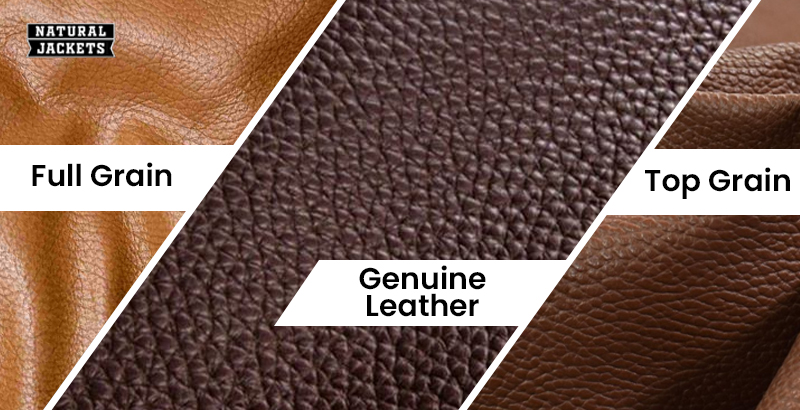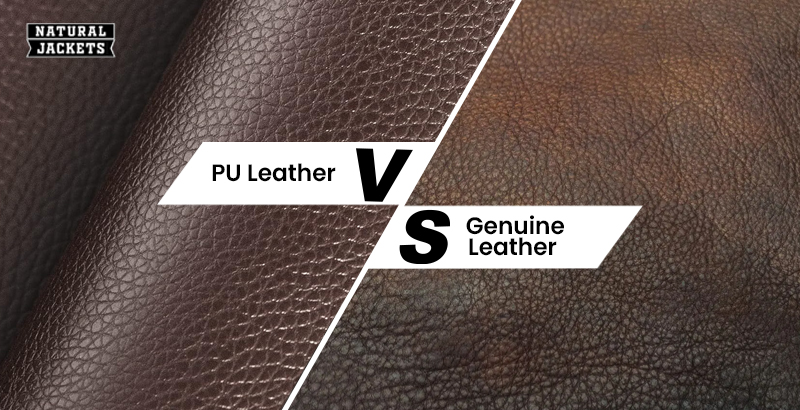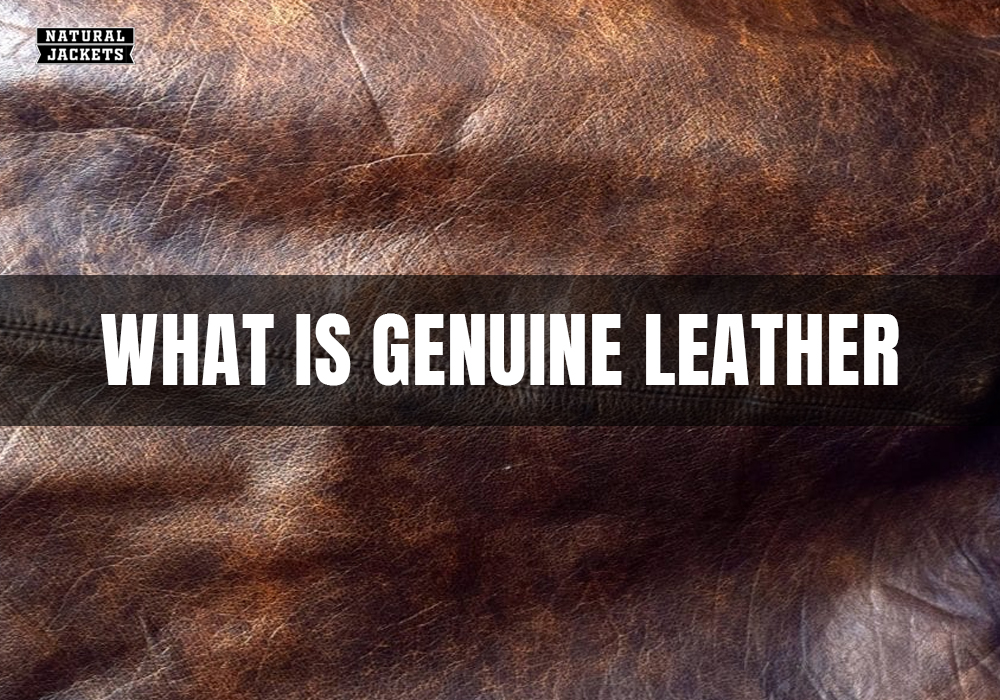Table of Contents
When you see “genuine leather” on a product tag, it sounds pretty convincing. Real leather—that’s what it means, right? But here’s the thing: in the leather world, that label doesn’t always point to the highest grade.
It’s made from real animal hide, usually cowhide. However, compared to premium types like full grain, it undergoes more processing and is meant for simpler use. It’s not synthetic, but it’s not the highest grade either. It’s more affordable, more processed, and used for items where appearance matters, but long-term durability isn’t the main focus. This guide explains how it’s made and where it fits in the broader leather world.
What Does Genuine Leather Actually Mean?
Some call it a beginner-grade option in real leather. It’s not fake, but it’s also not the best slice of the hide. Think of it as the middle sibling—not as rugged as full grain, not as refined as top grain, but still part of the same family.
This type usually comes from the layer beneath the outer surface. It’s easier to handle, cheaper to produce, and often touched up to look smoother or more uniform. Some call it the “entry-level” genuine leather—great for stuff that doesn’t need to age gracefully. You’ll often find it in things like light-use bags, fashion sneakers, or organizers where feel and finish matter more than patina or strength. But it’s not built to tell stories over the years.
How Is Genuine Leather Made?

Everything starts with animal hide—cowhide, most of the time. However, instead of using the very top surface, which retains all the natural texture, manufacturers use what’s underneath. That layer’s flatter, simpler to work with, and more consistent from piece to piece.
It’s then tanned—usually with a chrome-based process that keeps it soft and stops it from rotting. Next comes the finishing—dyeing, coating, and sometimes even stamping patterns to give it a neater look. Not to fake it—just to clean it up. The result? A leather that looks tidy and feels fine, even if it doesn’t hold up for decades.
Where Does Genuine Leather Fit In?
You’ll commonly find this type of leather in products designed to strike a balance—items that need a decent appearance, a natural texture, and a reasonable price tag. You’ll find it in things like belts, jackets, wallets, casual shoes, and day-to-day bags—places where full-grain feels excessive, and PU leather or faux leather doesn’t quite pass the touch test.
It’s a practical choice for brands focused on style and scale, and for buyers who want real leather, just not the kind that needs to last 20 years. You get the material, the texture, and the finish—all at a cost that keeps things accessible.
Genuine Leather vs Full Grain vs Top Grain

1. Genuine Leather – Budget-Friendly Real Option
This leather is made from the lower section of the hide, usually after the top surface is trimmed off. It’s still animal-based, typically cowhide, but doesn’t carry the same strength or texture found in higher grades. To give it a cleaner look, it’s often dyed, finished, and occasionally stamped with patterns.
Where it fits best:
- Doesn’t retain the original grain
- Treated for softness and surface uniformity
- Not intended for heavy use or long-term aging
You’ll often see this material in fashion accessories where cost-effectiveness and appearance are more important than long-lasting durability, like wallets, belts, or casual-use bags.
2. Full Grain Leather – Tough, Textured, and Timeless
This one comes from the very top of the hide, untouched and unpolished. It keeps the grain as is—natural, rugged, and full of life. Over time, it softens and develops a rich patina that tells its own story.
Quick highlights:
- No sanding or correction
- Long-lasting and highly breathable
- Darkens and shapes with age
Full-grain works best for premium products, such as boots, duffel bags, or anything meant to last for years.
3. Top Grain Leather – Smooth, Versatile, and Easy to Handle
Top grain leather comes from the upper part of the hide, but unlike full grain, it’s gently refined to remove surface marks. This gives it a cleaner, more uniform look without compromising too much on strength.
It is lightweight and smooth. This feature simplifies the process of working with and finishing the product. It is primarily used in leather goods that need a polished look and comfort.
Where it fits best:
- Office bags with structure but not too much weight
- Sleek wallets that slide easily into pockets
- Footwear that needs a dressed-up appearance without feeling stiff
Explore Them More Deeply?
Want to understand how they compare in detail? Check out our complete comparison of top grain, full grain, and genuine leather. Knowing the difference is helpful whether you’re sourcing large quantities or just adding some product along with the rest of us.
PU, Faux, Bonded — How Do They Compare to Genuine?
Plenty of materials today mimic leather’s look, but not all offer the same feel or performance. Here’s how genuine leather stacks up against the most common alternatives.
1. Genuine Leather vs PU Leather

PU (polyurethane) leather is made by coating fabric with plastic to imitate leather. It’s sleek and affordable, but doesn’t have the genuine depth of real hide.
Key Differences:
- PU is synthetic; genuine leather is made from animal hide, often cowhide
- PU doesn’t develop a patina over time—genuine leather does, subtly
- PU is lightweight and water-resistant; genuine leather feels more organic
Want more details? Check out our guide on what PU leather is.
2. Genuine Leather vs Faux Leather
Faux leather is another plastic-based substitute, usually made from PVC or PU. It delivers a uniform look, but lacks the texture and breathability that make real leather unique.
Key Differences:
- Faux is imitation—genuine leather is the real thing
- Faux doesn’t soften or breathe like genuine leather
- Genuine leather often carries natural marks—faux looks perfectly even
Curious how faux stacks up? Browse what faux leather is.
3. Genuine Leather vs Bonded Leather
Bonded leather is made by combining leftover leather fibers with adhesives and pressing them into sheets. It may look like leather on the surface, but it lacks structure and strength.
Key Differences:
- Bonded is made from scraps; genuine leather is a solid, continuous layer
- Bonded tends to crack or peel over time; genuine leather holds up better
- Bonded has less breathability and the lowest durability among leather options
More on this? See our guide: Real vs. Bonded Leather.
Where Does Genuine Leather Stand?
- Compared to synthetics, genuine leather lands in the middle:
- More authentic than faux, PU, or bonded
- More affordable (but less durable) than full grain or top grain
- Perfect for everyday pieces where cost, feel, and finish matter
It’s not about luxury or durability—it’s about balancing authentic texture with fair value.
Genuine Leather: Fact or Fluff?
Genuine leather sounds like a quality label—but in the leather world, it’s more of a category than a compliment. Yes, it’s made from real animal hide, most often cowhide. But what you’re getting isn’t the rugged, full-of-character surface that comes from the top of the hide. It’s a layer beneath that—processed, sanded, and finished to look cleaner.
So What Makes It “Genuine”?
- It’s real leather, not synthetic
- Comes from the lower part of the hide
- Often coated, stamped, or treated for uniform texture
- Lacks the natural grain and depth of higher grades
You’re not getting imitation products; instead, you’re missing out on the quality that this material offers. Unlike full-grain leather, it doesn’t improve with age or develop a natural patina. Instead, it is designed to maintain a consistent look.
Where It Works Best
When choosing leather for everyday items such as wallets, belts, shoes, and bags, natural materials are primarily valued for their appearance and cost rather than for developing a patina or aging. This practical strategy attracts brands and consumers looking for genuine leather at a reasonable price.
Conclusion
Genuine leather isn’t fake, but it’s not the finest tier either. It sits comfortably between high-end full-grain and affordable synthetics, offering the feel of real hide without the hefty price tag. While it won’t develop a rich patina or last for decades, it still delivers quality and visual appeal for everyday use.
For brands or buyers who want authentic material at scale—without going all-in on premium costs—genuine leather hits the sweet spot. Just understand what you’re choosing, and you’ll know exactly where it shines and where it doesn’t. Balance is the key.
FAQS:
Yes, it is. Genuine leather comes from animal hide, often cowhide. It’s not synthetic like PU or faux leather, but it’s not the top layer either—it’s processed for a cleaner, more uniform finish.
That depends on what you value. Vegan leather is man-made and cruelty-free, while genuine leather offers a natural texture. Learn more in our guide to vegan leather.
Not really. Full-grain leather develops a unique patina over time. Genuine leather, on the other hand, is treated and finished, so it retains its appearance instead of aging with use.
If you’re unsure whether genuine, top-grain, or other kinds of leather suit your needs, take a look at this full breakdown of types of leather material. It’ll help you decide what fits best.











